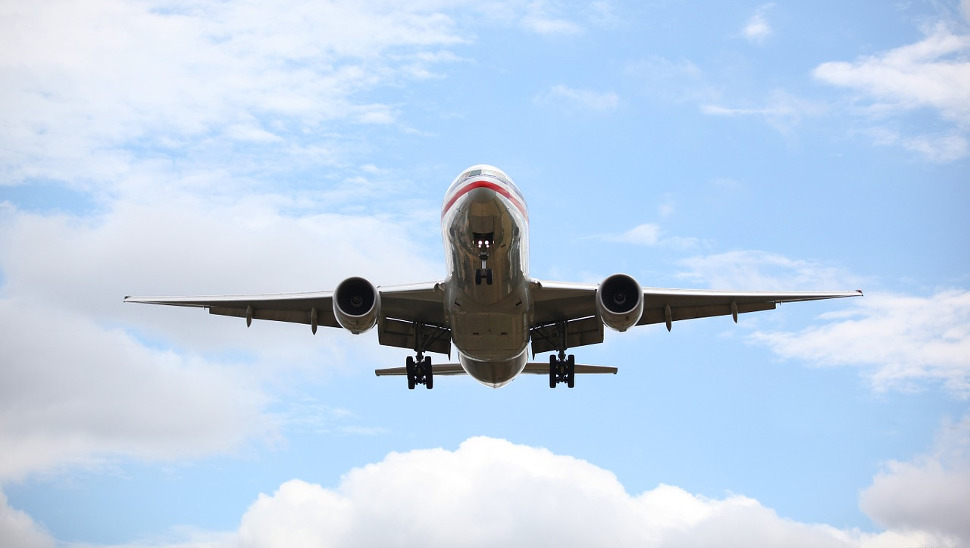FAA gives green light to more 5G towers around airports
Looks like it's high-flying and smooth sailing for 5G C-band deployment around aircraft and airports

The Federal Aviation Administration's ongoing battle with Verizon and AT&T over ultra-fast 5G C-band deployment around airports is finally ending: On Friday, the FAA announced an agreement on new steps that allow yet more 5G towers to operate safely around key airports.
In the year since Verizon and AT&T paid nearly $70 billion for the mid-band 5G spectrum (T-Mobile 600-MHz 5G that is not C-band) -- a slice of the bandwidth that provides better reliability and speed than Verizon and AT&T's original 5G deployments -- the FAA, US, Department of Transportation, and more recently the major airlines have expressed concern over possible safety issues, which has led to multiple deployment delays.
At the crux was whether 5G C-band towers situated near airports could interfere with some flight instrumentation, namely the altimeters that tell pilots how far they are from the ground.
AT&T and Verizon argued that it was safe and that the airlines, airports, and the FAA had months to work through these concerns and any potential technical hurdles. They also agreed to various mitigation measures, from lowering the transmission power of all 5G towers to mothballing some towers around the airports. That last action occurred just as the two wireless carriers were finally lighting up their 5G C-Band service. Verizon calls its flavor "5G Ultra Wideband" (AT&T just calls it "C-Band"). TechRadar took Verizon's new service for a ride earlier this week but did not travel around any airports where the latest flavor of 5G might've been unavailable.
Now, however, at least some of these 5G C-band towers will be powered up.
"The FAA appreciates the strong communication and collaborative approach with wireless companies, which have provided more precise data about the exact location of wireless transmitters and supported the more thorough analysis of how 5G C-band signals interact with sensitive aircraft instruments," the FAA said in a statement released on Friday.
5G vs. the airlines: a brief timeline
Jan. 13: FAA reveals exactly what 5G will do to airplanes The FAA is providing the airline industry with ‘Notice to Air’ missions that detail how 5G networks could potentially affect aircraft equipment, notably altimeters that rely on frequencies located between 4.2 and 4.4GHz.
Get daily insight, inspiration and deals in your inbox
Sign up for breaking news, reviews, opinion, top tech deals, and more.
Jan. 10: 50 airports get 5G "buffer zones" Airports in New York City, Los Angeles, Chicago, Las Vegas, Minneapolis, and more are covered by the new restrictions, with some airports excluded because they do not permit low-visibility landings or because 5G towers are not close enough to cause concern.
Read more ▼
Jan. 04: So much for 5G at the airport Verizon and AT&T agreed late Monday to delay the 5G C-Band rollout, after earlier in the day announcing plans to move forward with their $70 billion dollar investment in the 5G C-band spectrum and their plans to launch the service on January 5.
Jan. 03, 2022: The DoT treads into the battle A letter by Secretary of Transportation Pete Buttigieg and FAA Administrator Steve Dickson to AT&T and Verizon acknowledges the investment in 5G-C made by both companies but cautions that "the economic stakes for the aviation industry and the disruptions the traveling public would face ... are significant."
Dec. 08: FAA sets new 5G flight restrictions The FAA has issued a warning that interference from C-band 5G could result in flight diversions as the planned use of this new 5G wireless spectrum by mobile carriers poses an air safety risk.
Nov. 5: Pilots warned about 5G interference -- and carries caved Verizon and AT&T agreed to temporarily postpone their rollout of C-band 5G in order to work with the Federal Aviation Administration (FAA) to address concerns surrounding potential interference with key cockpit safety devices.
The location data allowed the FAA to determine that " it is possible to safely and more precisely map the size and shape of the areas around airports where 5G signals are mitigated, shrinking the areas where wireless operators are deferring their antenna activations."
The cooperation means that AT&T and Verizon will be turning on more towers. But the FAA added that it's still working with helicopter operators and the rest of the aviation industry to make sure they can also operate safely in 5G transmission areas.
As for consumers, if you have a 5G phone, it likely already supports 5G C-Band. Verizon customers might notice a tiny "UW" next to 5G when they have it. You can also test your speeds with Speedtest.net.
TechRadar has contacted the carriers for comment and will update this post with their response.

A 38-year industry veteran and award-winning journalist, Lance has covered technology since PCs were the size of suitcases and “on line” meant “waiting.” He’s a former Lifewire Editor-in-Chief, Mashable Editor-in-Chief, and, before that, Editor in Chief of PCMag.com and Senior Vice President of Content for Ziff Davis, Inc. He also wrote a popular, weekly tech column for Medium called The Upgrade.
Lance Ulanoff makes frequent appearances on national, international, and local news programs including Live with Kelly and Mark, the Today Show, Good Morning America, CNBC, CNN, and the BBC.